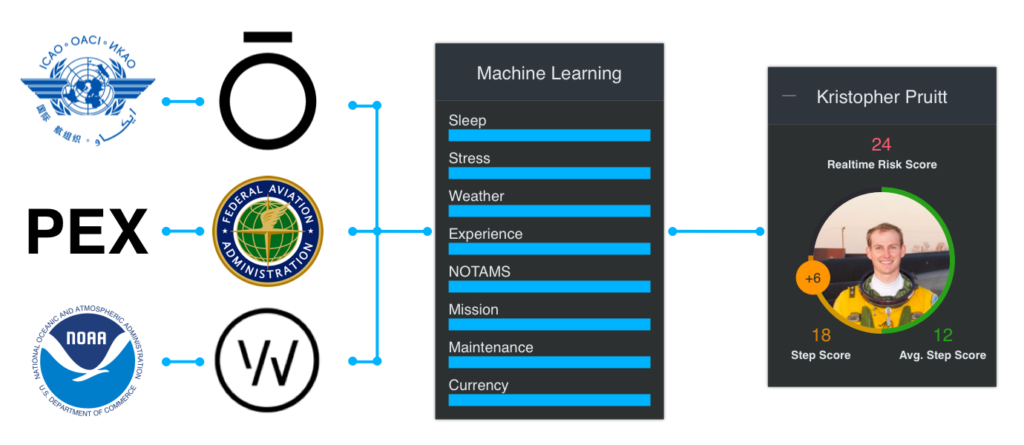Ever wake up a little groggy and have to go to work? Ever feel a little off but not sure why? For the average person in our day to day lives and careers these feelings often have little to no impact on our performance. When these feelings affect the Air Force’s top pilots under the factors of flying our country’s most demanding aircraft, the effects compound and can become incredibly dangerous. A 2020 report published by the Air Force summarizing military aviation losses from 2013 to 2020 found that nearly 90% of all accidents occurred from pilot error. With this staggering statistic and no real innovation developed to aid and assist these top aviators the Cenith team set out to develop a solution to this challenging problem. Cenith was awarded an SBIR phase 1 contract for our Elite Flight operational risk management platform.
Today the current way of understanding the risks involved in putting a pilot in the cockpit revolve around self-reporting. The pilots are given a survey of how they feel and how they slept before flying along with other environmental and operational factors. With a culture around “tough-it-out” and being able to perform, pilots can often self-report scores that are more in alignment with getting the green light to step to their aircraft instead of actually understanding their true data driven scores for things like rest. An even greater concern is the lack of innovation in presenting some of these metrics and scores to pilots on an ongoing and trend basis to allow them to optimize and improve their own metrics.

Aside from measuring risk as pilots go to step, the Air Force today is disjointed in their measurement and reporting of cross squadron risk factors as there is no standardization in reporting measures or statistics that would allow analysis and review to drive policy or procedure changes.
To better understand and manage the risks involved in sending a pilot on a flight, Cenith has been able to develop a real-time performance management system that addresses the risk management framework with biometric performance measurements that increase the accuracy of risk assessments and an interactive reporting and analysis tool that allows leaders to actually evaluate trends in performance and risk factors at the individual squadron level and higher operational levels.

Recent Comments